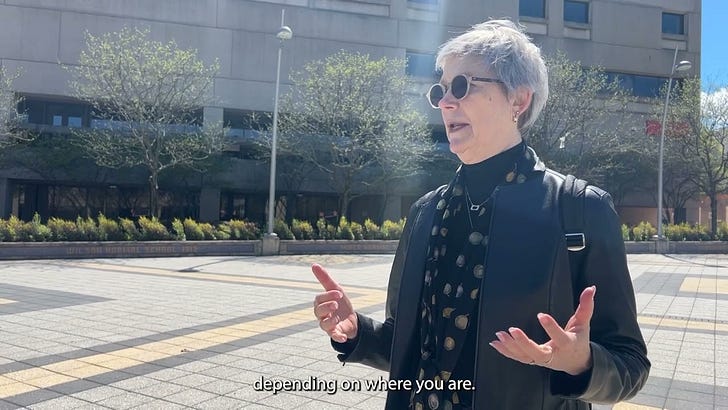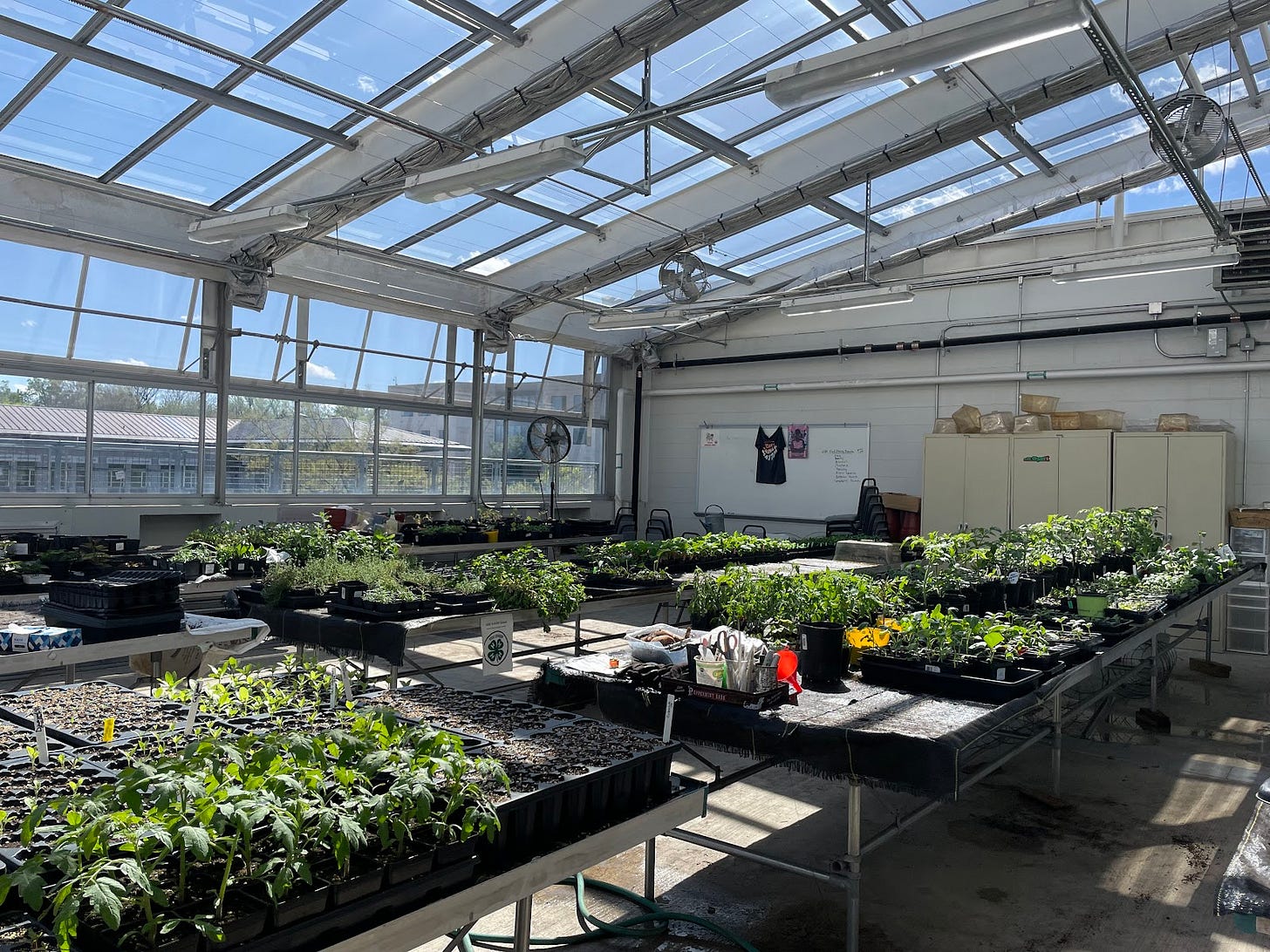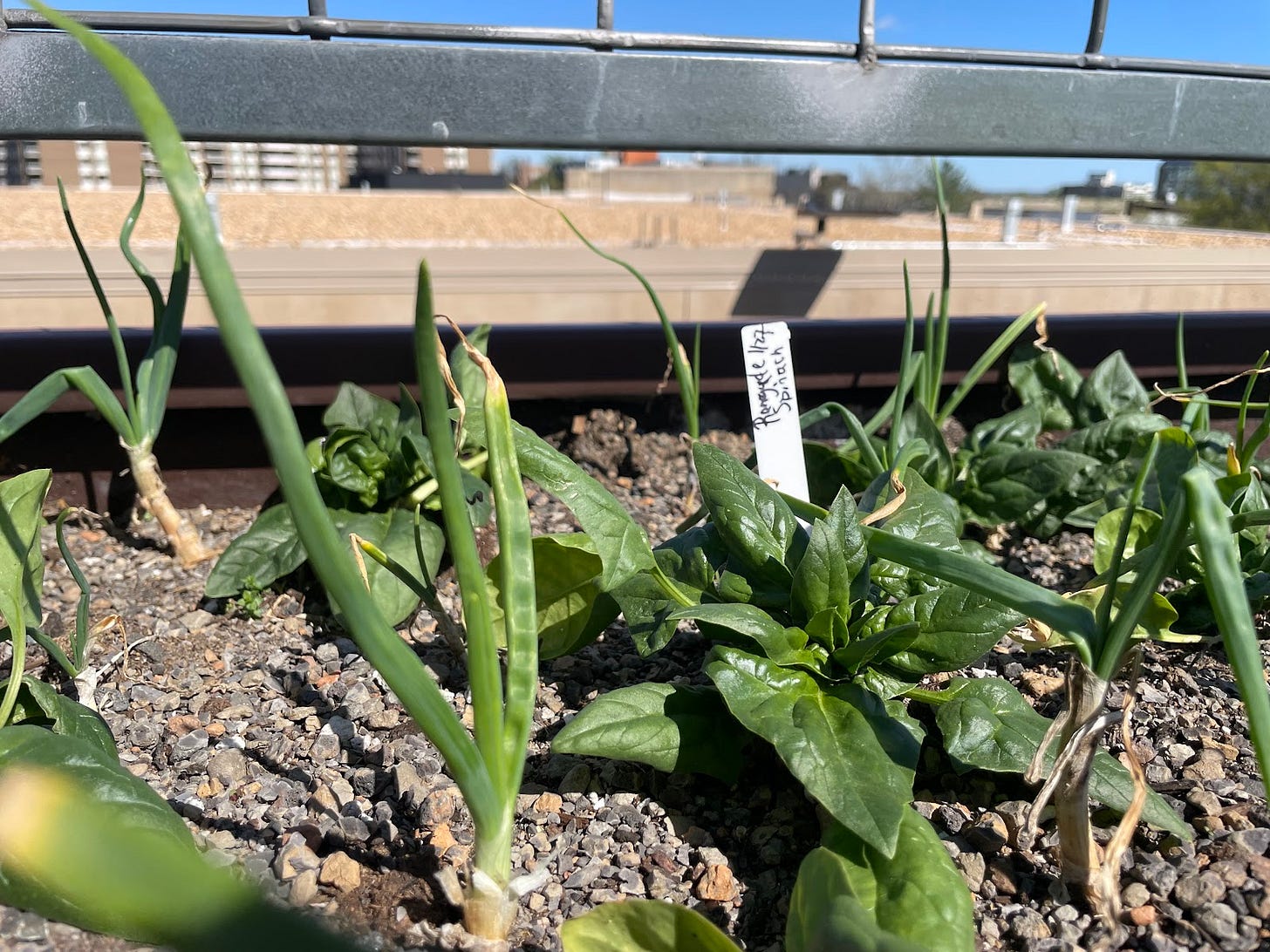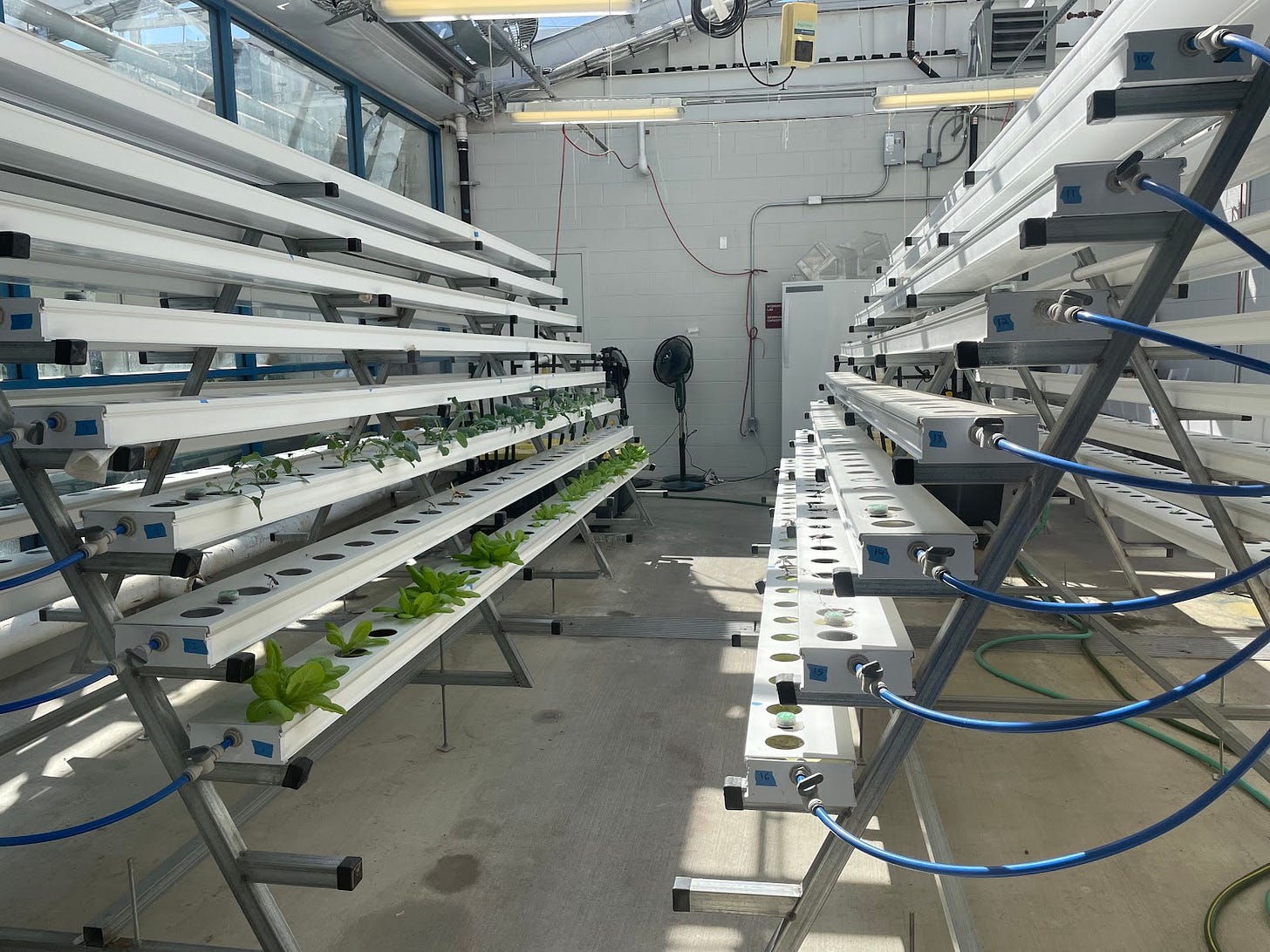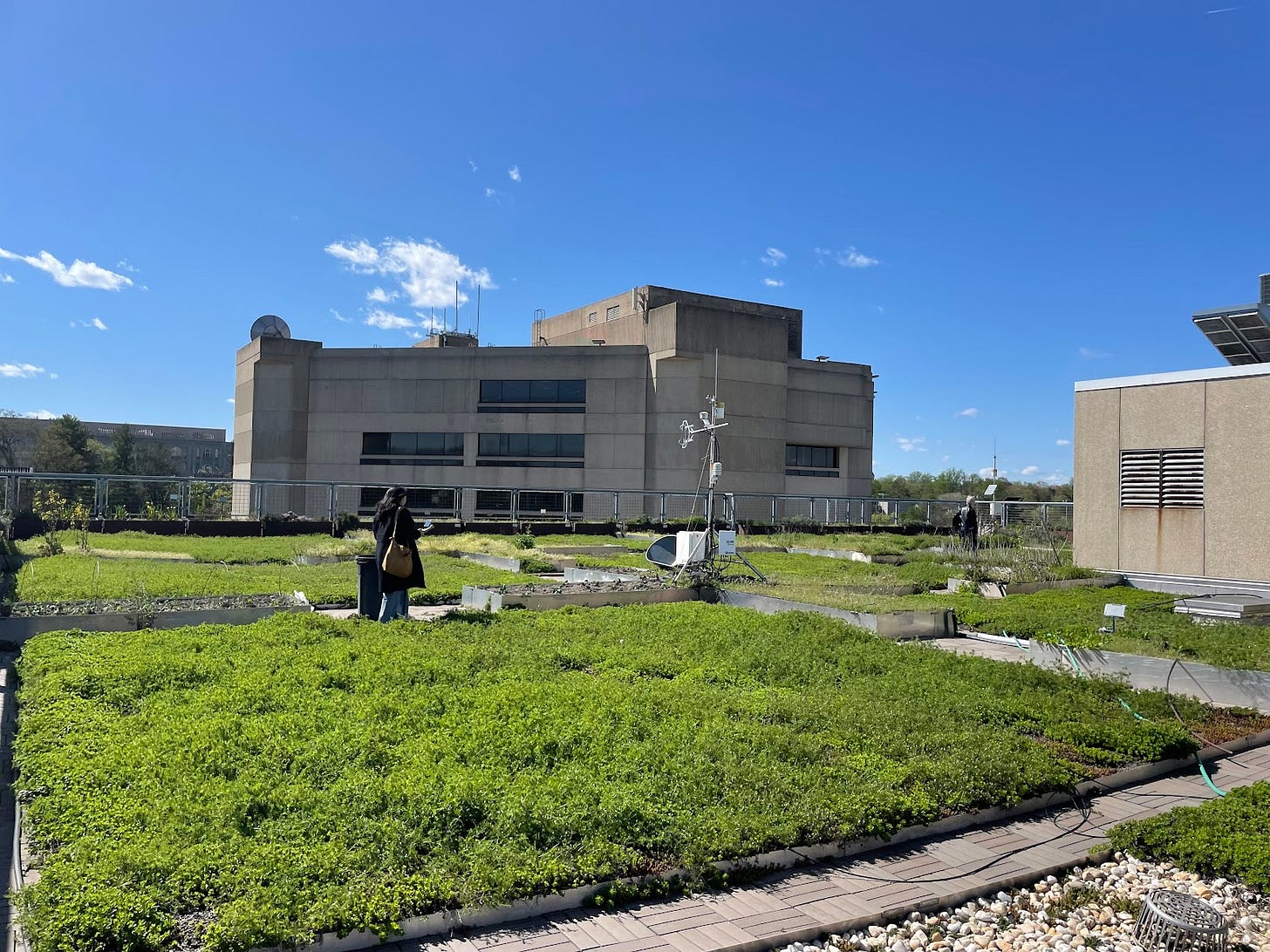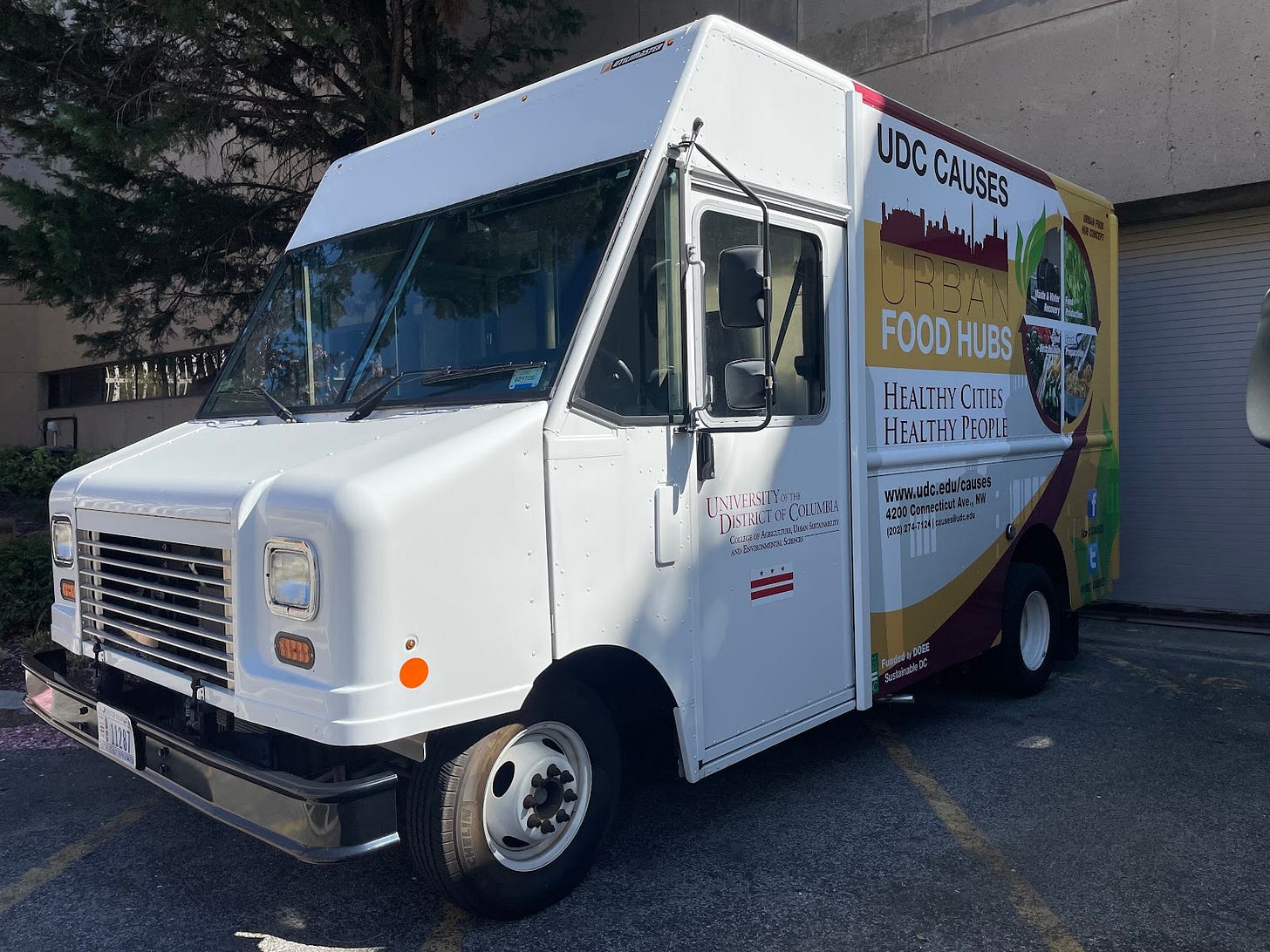From Concrete to Crops: Urban Food Hubs Transforming DC's Food Landscape
An inside look at how The University of the District of Columbia's ‘Urban Food Hubs’ model is charting the course for sustainable, climate-resilient food systems
Concrete and asphalt stretches as far as the eye can see, interspersed only by a smattering of street trees and small patches of grass. Standing at the intersection of Connecticut Avenue NW and Van Ness St. NW, in the heart of Washington, D.C.’s Ward 3, this seems like the furthest place from a farm. But this is actually the site of The University of the District of Columbia’s flagship Van Ness Urban Food Hub, which produces hundreds of pounds of food per year.
As climate change threatens traditional agriculture and urban centers continue to expand, cities like Washington, D.C. need to find new, sustainable ways to feed a growing population. UDC’s Urban Food Hubs program aims to create a sustainable, self-sustaining food system, from production, to preparation, to distribution, and including waste and water recovery.
At the same time, the program also seeks to address issues of equitable access to nutritious food throughout the city through full-scale food hubs in Ward 3 (the Van Ness Urban Food Hub, on UDC’s main campus) as well as Wards 5, 7, and 8.
“We wanted to turn the campus into a demonstration site of a circular economy that is focused on food systems, food, and agriculture,” said Dr. Sabine O’Hara, founding Dean of the UDC College of Agriculture, Sustainability, and Environmental Science (CAUSES) and architect of the Food Hubs program at UDC.
THE PROBLEM: TRADITIONAL AGRICULTURE IS NOT SUSTAINABLE
According to an academic peer-reviewed article by researchers at the University of the District of Columbia, the United States food system is highly centralized with only three of the fifty states producing more than 75 percent of U.S. fruits and vegetables.
High reliance on these three states alone makes the food supply-chain incredibly vulnerable to threats like climate change, requires tons of fuel and energy for long-distance transportation, and makes nutritious foods more inaccessible for the 80% of food consumers who live in urban and metro areas.
For example, California is, by far, the leading producer of fruits and vegetables. If the supply chain were to be interrupted for cross-country transportation, regions along the east coast of the United States are particularly at risk.
According to the US Department of Agriculture’s National Center for Appropriate Technology, processed food in the United States travels over 1,300 miles, and fresh produce travels over 1,500 miles, before being consumed. In fact, the time it takes between harvest and consumption has steadily increased over the last 50 years, despite improvements in transportation technology.
To accommodate the time spent in transport, produce is harvested before it ripens and frequently involves the usage and reliance of pesticides and chemicals, posing both health and environmental problems. Pesticides and chemicals impact the environment negatively through its impact on the food web cycle. Because pesticides contaminate soil, water, and turf, they can be hazardous to a wide range of other organisms, including fish, birds, insects, and plants.
Furthermore, because of these long transit times, important nutrients in some garden crops like spinach and asparagus are up to 38% less than they were in the middle of the 20th century, according to a 2004 US study from a BCC article. This underscores why nutrient-dense produce needs to be produced closer to where most customers reside, which is in urban regions along the US east coast, such as Washington, DC.
Alongside these agricultural challenges, there other non-sustainable aspects of food production contribute to the problem – water waste and food waste.
According to Dr. O’Hara, former Dean of CAUSES, waste is a significant concern throughout the cycle, occurring at every stage from production, processing, and at the consumer end.
Climate change intensifies the challenges faced by traditional agriculture, making it increasingly difficult to grow food in conventional locations due to shifting rainfall patterns, soil degradation, temperature fluctuations, and extreme weather events.
“Future wars will be about water and food -- if we learned anything from COVID, it’s how systematic deaths actually heightened vulnerabilities of our food system. This is the politics of food injustice,” said Dr. Tsakani Ngomane.
UDC’S URBAN FOOD HUB MODEL: A POTENTIAL SOLUTION
Food hubs have emerged throughout the country as innovative alternatives to the conventional United States food system to improve sustainability and resilience to threats from climate change.
The U.S. Department of Agriculture defines a food hub as, “a centrally located facility with a business management structure facilitating the aggregation, storage, processing, distribution, and/or marketing of locally/regionally produced food products.”
The University of DC has taken this model and expanded upon it to meet the needs of District residents and UDC students. Run through the university’s College of Agriculture, Sustainability, and Environmental Studies (CAUSES), the Urban Food Hubs program which is dedicated to “building capacity across the diverse communities in our city, but especially in the food desert neighborhoods of Washington, D.C.,” according to their website.
In particular, improving access to equitable access to fresh produce is a top priority. The current over-centralization of food systems leads to high costs of food and inequitable access to fresh produce. These failures are readily apparent across the District, and come at a real cost for metro-area residents.
“The disparities and nutritional challenges in Ward 3… and health complications such as obesity are due to not having access to proper nutrition and food sources. So, people are not likely to practice healthy eating habits,” said Dr. Tsakani Ngomane, the Director of the University of the District of Columbia’s Center for Urban Resilience, Innovation and Infrastructure (CURII).
“This is why our research of food production, processing, preparation, and nutrition is important, which is meant to address this gap and need.”
This research takes place at four different Food Hubs throughout DC, in Wards 3, 5, 7, and 8 in addition to one Beltsville, MD. Each food hub serves as a site of agricultural and environmental research, while producing food through gardens, hydroponics, and aquaponics.
FOUR PILLAR MODEL TO ‘CLOSE THE LOOP’
The Food Hubs Program has four pillars that act as a self-feeding cycle to close the gap on food injustice locally in DC and improve sustainability: Food Production, Food Preparation, Food Distribution, and Waste and Water Management. All of UDC’s Food Hubs have incorporated each of these four pillars in a customizable way that fits the space and the needs of each neighborhood.
To an everyday passerby on UDC’s main campus, it is not immediately apparent where the Van Ness Urban Food Hub is. That’s because the components of the Food Hub are not confined to just one rooftop, one greenhouse, or one garden -- they are completely integrated within UDC’s urban campus, making smart use of spaces that already existed.
For UDC’s Van Ness Food Hub located on campus in Ward 3, the food production includes a green roof, greenhouse hydroponics and aquaponics (that grows fish and grows vegetables without soil together), and community garden run by volunteers from the community and UDC students.
The existing roof structure of the CAUSES building served as the foundation for the creation of the 20,000 square foot green roof, which has a range of food plants, such as tomatoes, beans, okra, eggplant, and even berry bushes, using eighteen-inch deep planters along the roof's perimeter.
One important aspect of the green roof is its ability to absorb water and slow stormwater runoff that contributes to flooding. Multiple water waste prevention projects throughout the campus, including the green roof, are helping to manage changes in rainfall patterns due to climate change.
“The university drainage system ties into the drainage system of the roof. The captured water is recirculated into all of the greenery” around the campus plaza, Dr. O’Hara pointed out.
In addition to utilizing water waste in the drainage system to create beautification plots throughout the campus plaza, the Food Hub program has a composting site to use food waste in the creation of rich organic soil that's used on the green roof.
There is also a community garden that was created 13 years ago by a former UDC Law student named Coy McKinney in 2011. Since then, a partnership has developed with the university’s food pantry to provide fresh produce from the gardens to the pantry. Then food is then processed and distributed via farmers markets or a food truck that brings fresh produce to people who don’t have an accessible grocery store.
When asked about plans for expansion, Dr. O’Hara said, “Ideally we would like to have one in every ward.” Funding and land availability are two major challenges to this vision, which “is not a small undertaking.”
But as the effects of climate change intensify, bringing new threats to an already fragile and inequitable food system, the success of UDC’s Urban Food Hub model offers a practical way forward for the District. With dedication, pragmatism, and a commitment to comprehensive, sustainable changes, this could be the future of DC.

